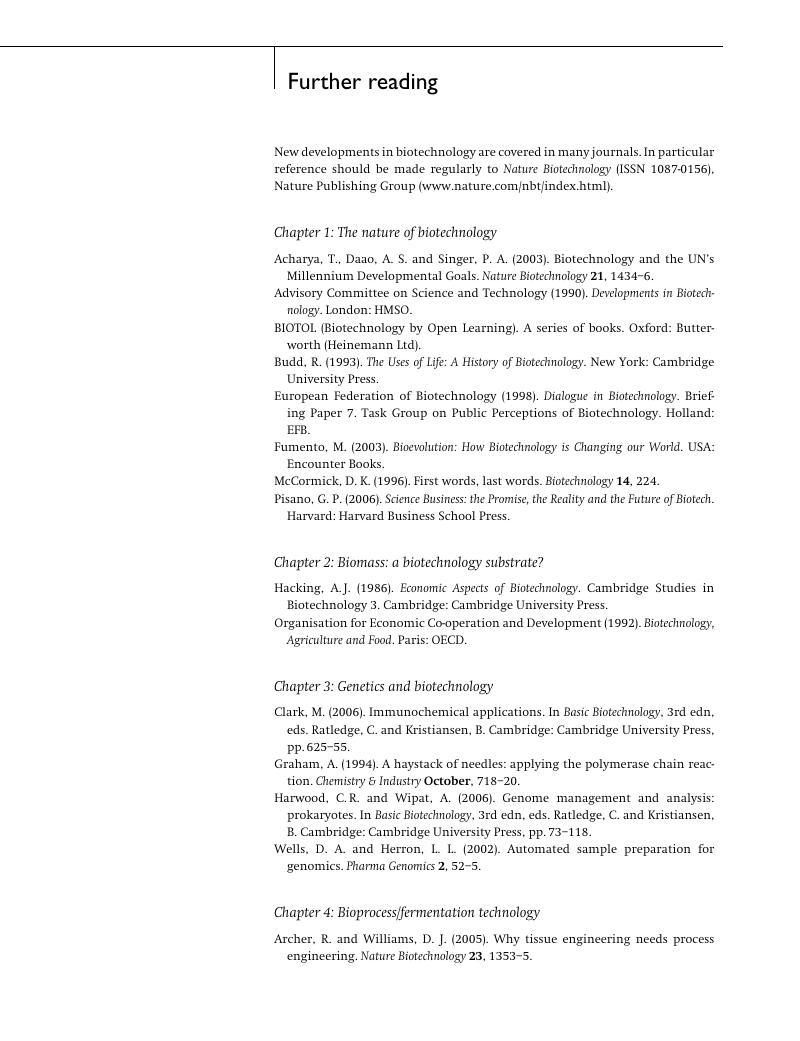Book contents
- Frontmatter
- Contents
- Preface
- Chapter 1 The nature of biotechnology
- Chapter 2 Biomass: a biotechnology substrate?
- Chapter 3 Genetics and biotechnology
- Chapter 4 Bioprocess/fermentation technology
- Chapter 5 Enzyme technology
- Chapter 6 Biological fuel generation
- Chapter 7 Environmental biotechnology
- Chapter 8 Plant and forest biotechnology
- Chapter 9 Animal and insect biotechnology
- Chapter 10 Food and beverage biotechnology
- Chapter 11 Biotechnology and medicine
- Chapter 12 Stem cell biotechnology
- Chapter 13 Protection of biotechnological inventions
- Chapter 14 Safety in biotechnology
- Chapter 15 Public perception of biotechnology: genetic engineering – safety, social, moral and ethical considerations
- Chapter 16 Looking to the future
- Glossary
- Further reading
- Index
- References
Further reading
Published online by Cambridge University Press: 05 June 2012
- Frontmatter
- Contents
- Preface
- Chapter 1 The nature of biotechnology
- Chapter 2 Biomass: a biotechnology substrate?
- Chapter 3 Genetics and biotechnology
- Chapter 4 Bioprocess/fermentation technology
- Chapter 5 Enzyme technology
- Chapter 6 Biological fuel generation
- Chapter 7 Environmental biotechnology
- Chapter 8 Plant and forest biotechnology
- Chapter 9 Animal and insect biotechnology
- Chapter 10 Food and beverage biotechnology
- Chapter 11 Biotechnology and medicine
- Chapter 12 Stem cell biotechnology
- Chapter 13 Protection of biotechnological inventions
- Chapter 14 Safety in biotechnology
- Chapter 15 Public perception of biotechnology: genetic engineering – safety, social, moral and ethical considerations
- Chapter 16 Looking to the future
- Glossary
- Further reading
- Index
- References
Summary

- Type
- Chapter
- Information
- Biotechnology , pp. 254 - 262Publisher: Cambridge University PressPrint publication year: 2009



